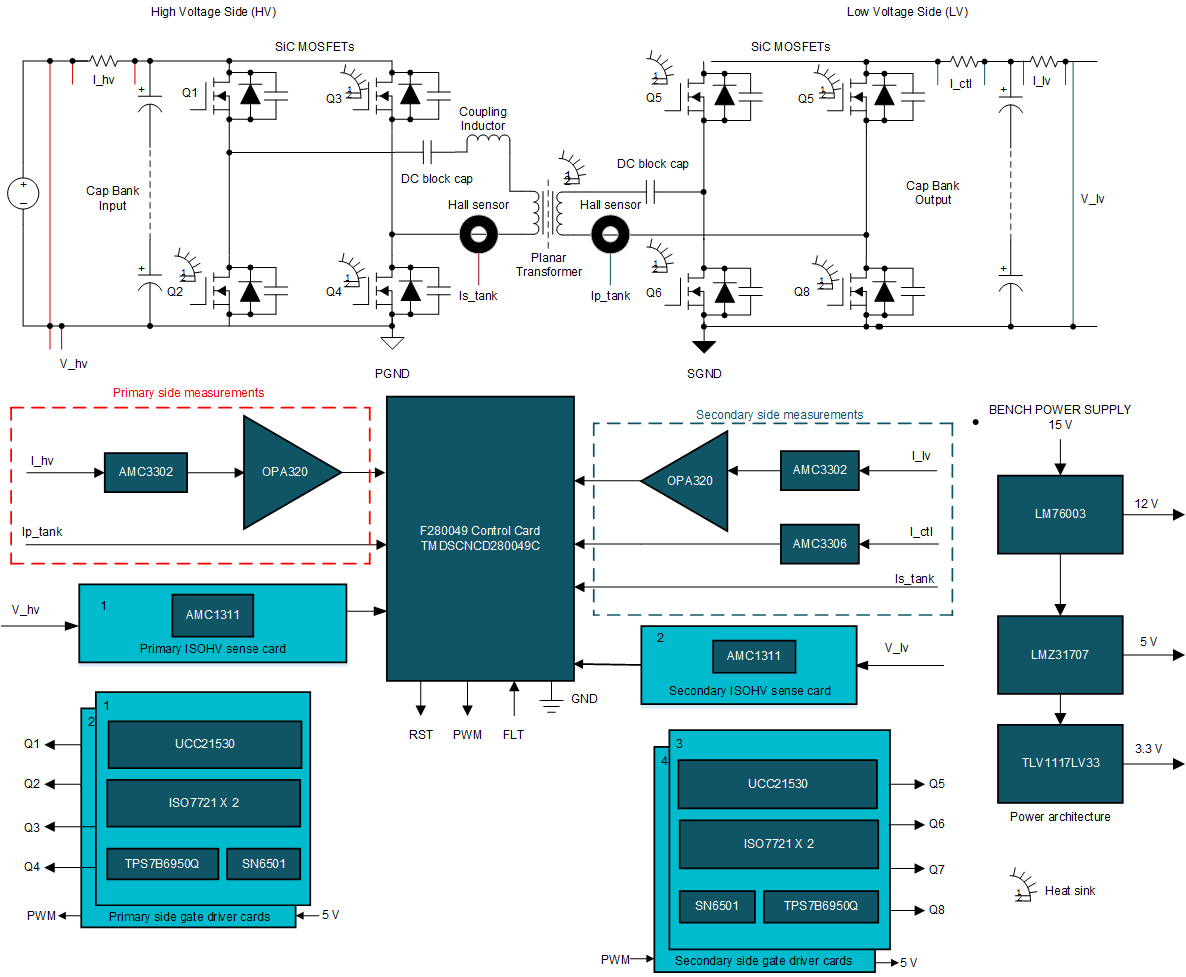JAJU732C June 2019 – July 2022
- 概要
- Resources
- 特長
- アプリケーション
- 5
- 1System Description
- 2System Overview
- 3Circuit Description
- 4Hardware, Software, Testing Requirements, and Test Results
- 5Design Files
- 6Related Documentation
- 7Terminology
- 8About the Author
- 9Revision History
2.1 Block Diagram
 Figure 2-1 TIDA-010054 Block
Diagram
Figure 2-1 TIDA-010054 Block
DiagramThis reference design consists of four main sections that intercommunicate:
- A power board comprising the power stage SiC MOSFETs, a high frequency transformer, current sensing electronics, and the system power tree
- A TMDSCNCD280049C control card to support digital control
- Four gate driver cards, each having a UCC21530 to drive the four legs of the DC/DC converter
- Two isolated high-voltage (ISOHV) sensing cards, each having an AMC1311 device to sense the input/output bus voltage
Note:
The isolated high-voltage (ISOHV) sensing card is a reuse of the design from TIDA-01606 Rev. E4 ISOHV card.